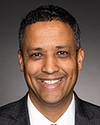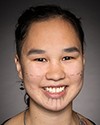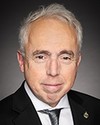Madam Chair, I will be sharing my time with the member for Yukon.
I would like to acknowledge that I am speaking from the traditional territory of the Mississaugas of the Credit First Nation from my home in Oakville.
My thoughts are with all indigenous families as they mourn. Like all Canadians, I am devastated by the horrifying news from British Columbia, where the remains of 215 children buried at the site of the Kamloops Indian Residential School were discovered. This is not news to indigenous peoples in Canada. My friend, the member for Northwest Territories, shared with me that there is a mission graveyard in his small community. Half of those buried there are children from the local residential school.
Many years ago, the Catholic Church removed the crosses, dug up the priests, nuns and brothers and moved them to a new graveyard. Then it plowed over the old cemetery and grew potatoes there. In the early 1900s, the community, working with elders, hired specialists to locate the bodies of the children buried there, reclaimed their names, remembered their ages and erected a monument. I am ashamed to say that I did not know this story, and I suspect that most Canadians do not know these stories.
Families deserve closure. Our government is committed to supporting survivors, the families as well as communities, to locate and memorialize children who were killed because they were forced to attend residential schools.
We invite indigenous communities to seek federal support, which is available, to conduct radar scans on other residential school sites to confirm if lost children are buried there.
The history of residential schools was not taught when I was a student. When I was first elected, I held a public screening of the documentary We Were Children. A former MP attended and said he wished he had known this history when he served in Parliament in the 1980s.
Duncan Campbell Scott, deputy superintendent of Indian Affairs in 1910, said of residential schools, “It is readily acknowledged that Indian children...die at a much higher rate than in their villages. But this alone does not justify a change in the policy of this Department, which is being geared towards the final solution of our Indian Problem.”
This month during #IndigenousReads, I am encouraging my community to read 21 Things You May Not Know About the Indian Act by Bob Joseph. It is important to confront our past to learn what is true in order to move forward on the path of reconciliation.
Near my home, the Mohawk Institute Indian Residential School operated in Brantford from 1828 to 1970. It served as a school for first nations children from Six Nations, as well as other communities throughout Ontario and Quebec. Just today, Six Nations of the Grand River has asked the federal government to help it search its grounds.
The Save the Evidence project from the Woodland Cultural Centre is working to restore the former Mohawk Institute Indian Residential School into a historical site and educational resource. Projects like this that are indigenous-led are vital for educating the public about our past and for understanding the realities of indigenous peoples in Canada.
The Truth and Reconciliation Commission made 94 calls to action. If Canadians have not already read them, they should do so. Calls 71 to 76 deal with the missing children and burial information.
One of the honorary witnesses to the Truth and Reconciliation Commission is a friend of mine who survived the genocide against the Tutsi in Rwanda. We have talked about what Canada can do as we implement the recommendations of the TRC. Call to action 81 calls for a residential schools national monument in Ottawa to honour survivors and all children who were lost to their families and communities.
Now is the time to take action on this. Our government has worked to build a more equitable relationship with indigenous peoples based on partnership and honesty. We have introduced legislation to establish a national day for truth and reconciliation, to amend the oath of citizenship and to implement the United Nations Declaration on the Rights of Indigenous Peoples.
We are working with indigenous leadership and communities to implement legislation that affirms and recognizes indigenous peoples' jurisdiction over child and family services to reduce the number of indigenous children in care. We are committed to continuing to take action to redress the legacy of residential schools and advance reconciliation across Canada.
I pray for the stolen little souls and I mourn their loss.













